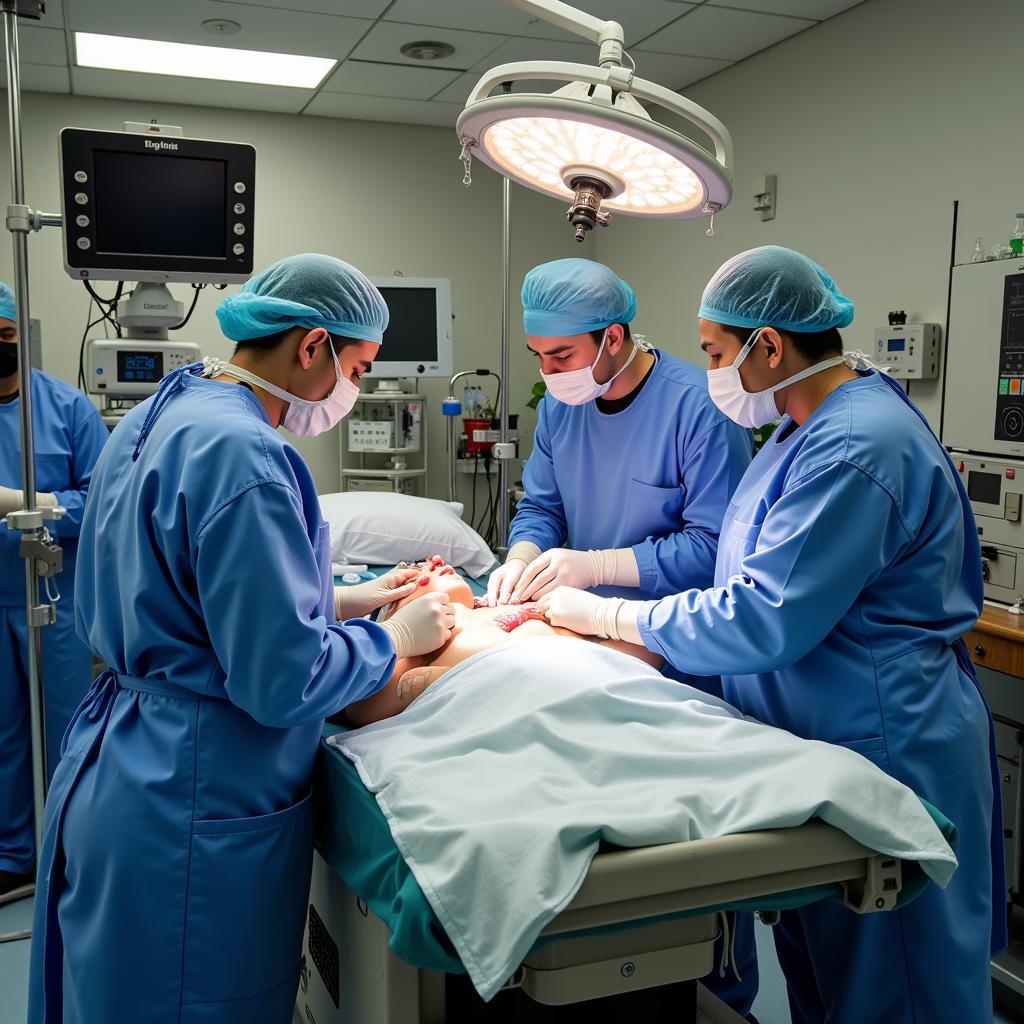The In-hospital Chain Of Survival For Adults is a series of crucial actions that significantly increase the chances of survival for patients experiencing cardiac arrest within a hospital setting. This guide will explore each link in this chain, emphasizing its importance and providing practical insights for healthcare professionals and concerned individuals alike.
Recognizing and Responding to Cardiac Arrest
The first link in the in-hospital chain of survival is immediate recognition of cardiac arrest. This involves quickly assessing the patient for unresponsiveness and absence of normal breathing. Early recognition is paramount as every second counts in these critical situations. Healthcare providers should be trained to identify the subtle signs of deterioration that may precede a full cardiac arrest. Once cardiac arrest is suspected, the emergency response system must be activated immediately. This typically involves calling a designated emergency number within the hospital and clearly communicating the location and situation.
Early High-Quality CPR
The second link, early high-quality CPR, is crucial for maintaining blood flow to vital organs, especially the brain and heart. CPR should be initiated immediately following the recognition of cardiac arrest and continued until advanced life support measures are available. Effective CPR involves proper hand placement, adequate chest compression depth and rate, and minimizing interruptions. Regular training and adherence to established guidelines are essential for delivering high-quality CPR. This includes focusing on complete chest recoil, minimizing interruptions in compressions, and avoiding excessive ventilation.
Rapid Defibrillation
Rapid defibrillation is the third link in the chain. Defibrillation involves delivering an electric shock to the heart to restore a normal rhythm. Early defibrillation is crucial, as the chances of survival decrease significantly with each minute that passes without defibrillation. Automated external defibrillators (AEDs) are increasingly available in hospitals, making it possible for trained personnel to deliver rapid defibrillation even before the arrival of specialized teams. The rapid deployment and use of AEDs can dramatically increase the likelihood of a successful resuscitation.
Advanced Life Support and Post-Cardiac Arrest Care
The fourth link, advanced life support, involves the administration of medications, advanced airway management, and other interventions by trained healthcare professionals. This stage aims to stabilize the patient’s condition and address the underlying cause of the cardiac arrest. Post-cardiac arrest care focuses on optimizing organ function and minimizing complications following a successful resuscitation. This includes maintaining appropriate blood pressure, oxygen levels, and body temperature.
 Advanced Life Support Measures in a Hospital Setting
Advanced Life Support Measures in a Hospital Setting
What are the first steps in the in-hospital chain of survival?
The first steps are immediate recognition of cardiac arrest and activation of the emergency response system.
Why is early defibrillation important?
Early defibrillation is crucial because the chances of survival decrease significantly with each passing minute without it.
What does post-cardiac arrest care involve?
Post-cardiac arrest care focuses on optimizing organ function and minimizing complications after resuscitation.
How does high-quality CPR contribute to survival?
High-quality CPR maintains blood flow to vital organs, increasing the chances of survival.
Who should be trained in the in-hospital chain of survival?
All healthcare providers within a hospital setting should be trained in the in-hospital chain of survival.
What is the significance of the in-hospital chain of survival?
The in-hospital chain of survival significantly increases the chances of survival for patients experiencing cardiac arrest within a hospital.
How can hospitals improve their chain of survival response?
Hospitals can improve their chain of survival response by providing regular training, ensuring easy access to AEDs, and implementing protocols for rapid response.
For assistance, contact us at Phone Number: 02437655121, Email: [email protected] Or visit us at: 298 Cau Dien St., Minh Khai, Bac Tu Liem, Hanoi, Vietnam. We have a 24/7 customer service team.